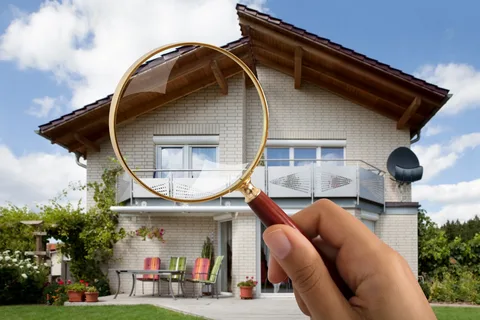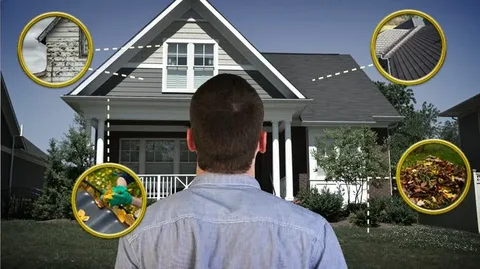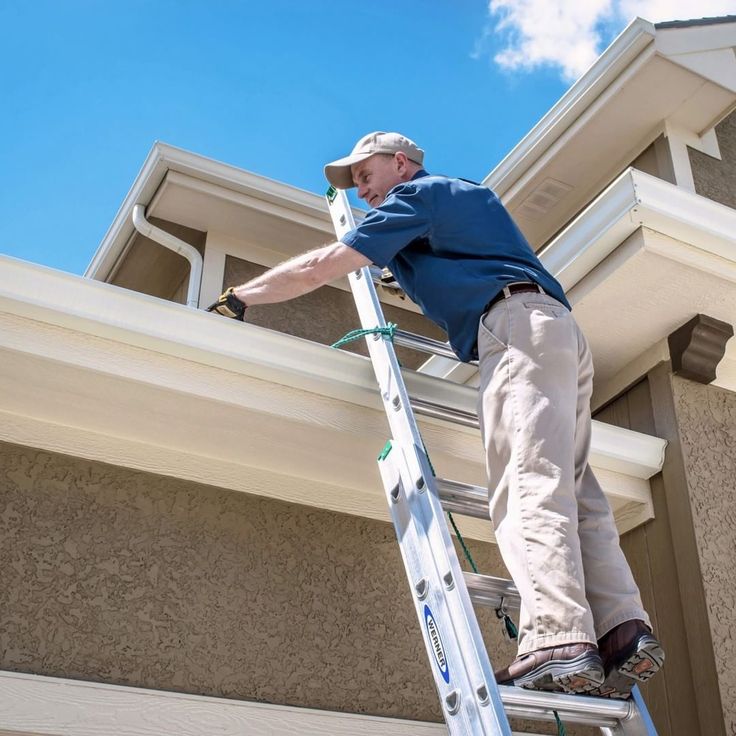Why Does My Insurance Company Want to Inspect My House?
If you’ve ever wondered, “Why does my insurance company want to inspect my house?” you’re not alone. This question pops up frequently among homeowners, especially when they receive that unexpected notice about an upcoming inspection. Let’s dive into the reasons behind these inspections, what you can expect, and how to prepare for them. And don’t worry, we’ll sprinkle in some humor to keep things light!

The Basics: What is a Home Insurance Inspection?
A home insurance inspection is a process where an insurance company assesses the condition of your property to determine the level of risk it presents. This helps them decide on the appropriate coverage and premiums for your policy. Think of it as a health check-up for your house1.
Why Do They Do It?
Insurance companies are in the business of managing risk. By inspecting your home, they can identify potential hazards and ensure that your property meets their standards for coverage. This helps them avoid costly claims down the line2.
Types of Home Insurance Inspections
There are several types of home insurance inspections, each serving a different purpose:
- Exterior Inspection: This is the most common type and often doesn’t require an appointment. An inspector will check the outside of your home for any visible issues, such as roof damage, overhanging trees, or broken steps1.
- Interior Inspection: This involves a more detailed look inside your home. The inspector will check for things like electrical issues, plumbing problems, and overall maintenance2.
- 4-Point Inspection: This focuses on four main areas: the roof, electrical system, plumbing, and HVAC (heating, ventilation, and air conditioning). It’s often required for older homes1.
- Wind Mitigation Inspection: Common in hurricane-prone areas, this inspection assesses how well your home can withstand strong winds1.
Why Your Insurance Company Wants to Inspect Your House
Now, let’s get into the nitty-gritty of why your insurance company wants to inspect your house. Here are the main reasons:
- Assessing Risk: The primary reason for an inspection is to assess the risk of potential damage or loss. By doing so, the insurance company can accurately determine the level of coverage you need and set premiums accordingly3.
- Verifying Replacement Cost: Inspections help insurance companies verify the replacement cost of your home. This is the amount it would take to rebuild your home from scratch in case of a total loss. It’s different from the market value of your home4.
- Identifying Pre-Existing Issues: Inspections can uncover pre-existing issues that might affect your coverage. For example, if your roof is in poor condition, the insurance company might require you to repair it before they provide coverage2.
- Ensuring Compliance: Insurance companies want to make sure your home complies with their standards. This includes checking for safety features like smoke detectors and fire extinguishers1.

Preparing for a Home Insurance Inspection
Getting ready for a home insurance inspection can be a bit nerve-wracking, but it doesn’t have to be. Here are some tips to help you prepare:
- Clean and Declutter: A tidy home makes a good impression. Clear away any clutter and make sure your home is clean and presentable2.
- Fix Obvious Issues: Take care of any obvious problems, such as broken windows, leaky faucets, or damaged roof shingles. This can help you avoid potential issues during the inspection1.
- Gather Documentation: Have any relevant documents ready, such as receipts for recent repairs or upgrades. This can help the inspector get a complete picture of your home’s condition2.
- Be Present: If possible, be present during the inspection. This allows you to answer any questions the inspector might have and address any concerns on the spot1.
What to Expect During the Inspection
During the inspection, the inspector will walk around your property, taking notes and photos. They might ask you questions about the age of your roof, the condition of your plumbing, and any recent renovations. Don’t be alarmed if they point out issues – their goal is to ensure your home is safe and insurable2.
Common Findings and Their Implications
Here are some common findings during home insurance inspections and what they might mean for your coverage:
- Roof Damage: If your roof is damaged or nearing the end of its lifespan, the insurance company might require you to repair or replace it before providing coverage1.
- Outdated Electrical Systems: Old or faulty electrical systems can be a fire hazard. If your home has outdated wiring, you might need to upgrade it to meet the insurance company’s standards5.
- Plumbing Issues: Leaky pipes or outdated plumbing can lead to water damage. The insurance company might require you to fix any plumbing issues before they provide coverage2.
- Structural Problems: Issues with the foundation or structure of your home can be a major concern. If the inspector finds structural problems, you might need to address them to maintain coverage1.
How to Address Inspection Findings
If the inspection uncovers any issues, don’t panic. Here are some steps you can take to address them:
- Get a Detailed Report: Ask the inspector for a detailed report of their findings. This will help you understand what needs to be fixed and why2.
- Prioritize Repairs: Focus on the most critical issues first, such as roof damage or electrical problems. These are the issues that are most likely to affect your coverage1.
- Hire Professionals: For major repairs, it’s best to hire professionals. This ensures the work is done correctly and meets the insurance company’s standards2.
- Keep Records: Keep detailed records of all repairs and upgrades. This can help you demonstrate to the insurance company that you’ve addressed the issues1.
The Benefits of a Home Insurance Inspection
While a home insurance inspection might seem like a hassle, it can actually be beneficial for homeowners. Here are some of the benefits:
- Peace of Mind: Knowing that your home is in good condition can give you peace of mind. You’ll know that your property is safe and that you’re adequately covered2.
- Potential Savings: Addressing issues before they become major problems can save you money in the long run. For example, fixing a small roof leak now can prevent costly water damage later1.
- Improved Coverage: By ensuring your home meets the insurance company’s standards, you might be able to get better coverage at a lower premium2.
- Increased Home Value: Making necessary repairs and upgrades can increase the value of your home. This can be beneficial if you ever decide to sell1.

Conclusion
In conclusion, home insurance inspections are an important part of the insurance process. They help insurance companies assess risk, verify replacement costs, and identify pre-existing issues. By preparing for the inspection and addressing any findings, you can ensure your home is safe and adequately covered. And remember, a little humor goes a long way – so don’t stress too much about the inspection. After all, it’s just a health check-up for your house!
If you have any questions or need further assistance, don’t hesitate to reach out to your insurance company. They’re there to help you navigate the process and ensure you have the coverage you need.
1: Home Insurance Inspection: 13 Things You Should Know 2: What It Means When Your Insurance Wants a Home Inspection 4: Home Insurance Inspection: Here’s What to Expect 3: Why does my insurance company want to inspect my house? 5: Why Home Inspections are Vital to Home Insurance
Leave a Reply